1. Week 1 - Always Tired
1.1. Lectures
1.1.1. 1- Introduction to Anaemia
1.1.2. 2- Role of Haemoglobin in Oxygen Delivery to Tissues
1.1.3. 3- Megaloblastic Anaemia
1.1.4. 4- Iron Deficiency
1.1.5. 5- Introduction to Auto-Immunity
1.2. Basic and Clinical Sciences Theme
1.2.1. 1- Laboratory Skills Full Blood Count & Coagulation
1.2.2. 2- Molecular Diagnostics in Haematology
1.3. PBL
1.3.1. Session 1
1.3.2. Session 2
1.3.3. Session 3
2. Week 2 - While I'm Here
2.1. Lectures
2.1.1. 1- Leukaemia – Pathogenesis, Pathophysiology & Management
2.1.2. 2- Leukaemia – What You Need To Know
2.1.3. 3- Lymphoma – What is It
2.1.4. 4- Introduction to Chemotherapy
2.1.5. 5- Hematopoietic Stem Cell Biology and Stem Cell Transplantation
2.2. Basic and Clinical Sciences Theme
2.2.1. 1- Interpreting Abnormal Blood Counts/Films
2.2.2. 2- Laboratory Skills: Group Cross-Match
2.3. PBL
2.3.1. Session 1
2.3.2. Session 2
2.3.3. Session 3
3. Week 3 - A Swollen Knee
3.1. Lectures
3.1.1. 1- Physiology of Coagulation – Platelet & Clotting Factors
3.1.2. 2- Acquired Bleeding Disorders
3.1.3. 3- Benefits & Complications of Treating Haemophilia
3.1.4. 4- Blood Products in the Treatment of Disease
3.1.5. 5- vW disease
3.2. Basic and Clinical Sciences Theme
3.2.1. 1- Interpreting Laboratory Tests in Bleeding Disorders
3.2.2. 2- Case Presentation: The Haemophilias & Von Willebrand’s Disease
3.3. PBL
3.3.1. Session 1
3.3.2. Session 2
3.3.3. Session 3
4. Week 4 - Pale & Feverish
4.1. Lectures
4.1.1. 1- Thalassaemia
4.1.2. 2- Approach to Infective Fever
4.1.3. 3- Diagnosis of Malaria
4.1.4. 4- Prenatal Diagnosis of Thalassaemia
4.1.5. 5- Common Parasitic Diseases
4.1.6. 6- Sickle Cell Disease
4.2. Basic and Clinical Sciences Theme
4.2.1. 1- Interpreting Lab Tests in Anaemia
4.3. PBL
4.3.1. Session 1
4.3.2. Session 2
4.3.3. Session 3
5. Week 5 - Michelle’s Painful Calf
5.1. Lectures
5.1.1. 1- Thrombosis and Thrombophilia
5.1.2. 2- Anticoagulant Medication
5.1.3. 3- Diagnosis & Management of Pulmonary Embolism
5.1.4. 4- Anti-Platelet & Thrombolytic Agents
5.2. Basic and Clinical Sciences Theme
5.2.1. 1- Imaging in Haematology
5.2.2. 2- Medications in Pregnancy
5.3. PBL
5.3.1. Session 1
5.3.2. Session 2
5.3.3. Session 3
6. Themes
6.1. Patient-doctor theme
6.1.1. Communication skills
6.1.1.1. 1- Dealing With Bad News
6.1.1.2. 2- History Taking in Anaemia
6.1.1.3. 3- History Taking in Haematological Malignancy
6.1.1.4. 4- History Taking in Bleeding & Thrombotic Disorders
6.1.2. Procedural skills
6.1.2.1. 1- Intravenous Cannulation and Venepuncture
6.1.2.2. 2- Sharps and Needlestick Injury
6.1.3. Clinical diagnostic skills
6.1.3.1. 1- Physical Examination in Haematology
6.1.3.2. 2- Haematological Examination – Focus on Examining Lymph Nodes
6.2. CDT
6.2.1. 1- Services for the Elderly
6.2.1.1. Haneef, Ghannam, and Gain
6.2.2. 2- Ethics of Prenatal Diagnosis
6.2.2.1. Omar, Rakan, and Abdulaziz Saleh
6.2.3. 3- Video Presentation: Transfusion Practice
6.2.3.1. Moyassar, Turkistani, and Yousif
6.3. PPD
6.3.1. Understanding Systems & Complexity
6.3.1.1. Alselami, Hossam, and Mohammad Ali
6.3.2. 1- Doctor, Child & Family
6.3.2.1. Hassan, Moayyad, and Maqati
6.3.3. What is Human Factors Engineering
6.3.3.1. Sultan, Balawi, and Aldakhil
6.3.4. 2- Death & Dying
6.3.4.1. Bader, Essam, and Hmoud
6.4. EBM
6.4.1. 1- Appraisal of Diagnosis Studies I
6.4.2. 2- Appraisal of Diagnosis studies II (PBL Groups)
